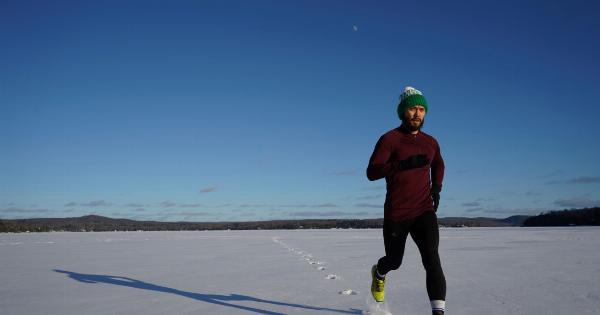Winter swimming, a popular activity among adventurers and thrill-seekers, involves swimming in open water during the colder months of the year.
Although it may sound exhilarating, this extreme sport comes with its fair share of risks, one of which is frostbite. Frostbite occurs when the skin and underlying tissues freeze due to prolonged exposure to freezing temperatures. In this article, we will delve into the world of winter swimming and the dangers associated with frostbite.
The Thrill of Winter Swimming
Winter swimming, also known as cold-water swimming or ice swimming, has gained popularity in recent years. It attracts individuals who seek the adrenaline rush and unique experiences.
Whether it’s diving into icy waters, participating in polar plunges, or swimming in the freezing ocean, these swimmers embrace the challenge of braving the cold elements.
Understanding Frostbite
Frostbite is a serious condition that occurs when body tissues freeze. It usually affects exposed areas like the face, ears, fingers, and toes. The freezing temperatures cause blood vessels to constrict, reducing blood flow to the extremities.
As a result, the affected tissues lack oxygen and essential nutrients, leading to cell damage and potentially permanent injuries.
The Stages of Frostbite
Frostbite progresses in three stages, each with distinct symptoms and severity:.
Stage 1: Frostnip
Frostnip is the mildest form of frostbite, characterized by numbness, paleness, and a cold sensation in the affected area. The skin may appear waxy or white. Although discomforting, frostnip doesn’t usually cause permanent damage.
Rewarming the area should alleviate the symptoms.
Stage 2: Superficial Frostbite
In superficial frostbite, ice crystals form within the skin and the underlying tissues. The affected area turns pale, hard, and cold to the touch. Swelling, blistering, and a burning or prickling sensation may be present.
Prompt medical attention is crucial at this stage to prevent further damage.
Stage 3: Deep Frostbite
Deep frostbite is the most severe stage and can result in irreversible damage. The skin appears white or bluish-black and feels hard and numb. Blisters may form, indicating tissue damage. In some cases, affected body parts may eventually require amputation.
Immediate medical intervention is essential to minimize the long-term consequences.
Preventing Frostbite during Winter Swimming
While winter swimming enthusiasts love to push their limits, it’s crucial to take precautions to prevent frostbite. Here are some essential tips:.
1. Dress Appropriately
Wearing the right gear is paramount. Invest in a high-quality wetsuit and thermal swimwear designed for cold-water conditions. Additionally, wear neoprene gloves, socks, and a neoprene swim cap to protect the extremities.
2. Limit Exposure Time
Limit the duration of your swim to reduce the risk of frostbite. Gradually increase your tolerance to cold water over time and pay attention to any warning signs your body may give you.
3. Warm-Up Properly
Engage in warm-up exercises before entering the water to increase blood circulation. These exercises can help minimize the chances of frostbite and prepare your body for the temperature change.
4. Buddy System
Never swim alone. Always have a swimming partner or a designated observer on the shore who can assist you in case of an emergency.
5. Avoid Alcohol
Alcohol impairs judgment and dulls the senses, making it harder to recognize the early signs of frostbite. Stay sober during your winter swimming adventures.
6. Be Aware of Water Conditions
Prioritize your safety by understanding the water conditions you are swimming in. Factors such as currents, tides, and ice formations can significantly impact the risk of frostbite. Stay informed and choose your swimming location wisely.
7. Listen to Your Body
Pay close attention to any discomfort or signs of frostnip during your swim. If you start experiencing extreme cold or pain, it’s time to exit the water and warm up immediately. Ignoring these warning signs can lead to serious consequences.
Recognizing and Treating Frostbite
Despite taking precautions, accidents can still happen. It’s important to recognize the signs of frostbite and act accordingly:.
1. Seek Warmth
If you suspect frostbite, get out of the water or freezing environment as soon as possible. Move to a warm place and remove any wet clothing. Immerse the affected body parts in warm (not hot) water, or use warm compresses to gradually rewarm the tissues.
2. Avoid Rubbing or Massaging
Do not rub or massage frostbitten areas, as this can further damage the tissues. Instead, let the warmth and circulation naturally improve the condition.
3. Protect Blisters
If blisters develop, cover them with sterile, non-stick bandages. Refrain from popping or applying adhesive bandages, as this may lead to infection.
4. Seek Medical Attention
If you suspect deep frostbite or experience severe symptoms, seek immediate medical attention. Professionals can evaluate the extent of the damage and provide appropriate treatment.
Conclusion
Winter swimming carries a thrilling and adventurous appeal, but it’s crucial to be aware of the potential dangers, especially frostbite.
By understanding the stages of frostbite, taking preventive measures, and knowing how to respond in case of frostbite, winter swimmers can minimize the risks associated with this extreme sport. Remember, safety should always be a top priority when indulging in any cold-water activities.






















